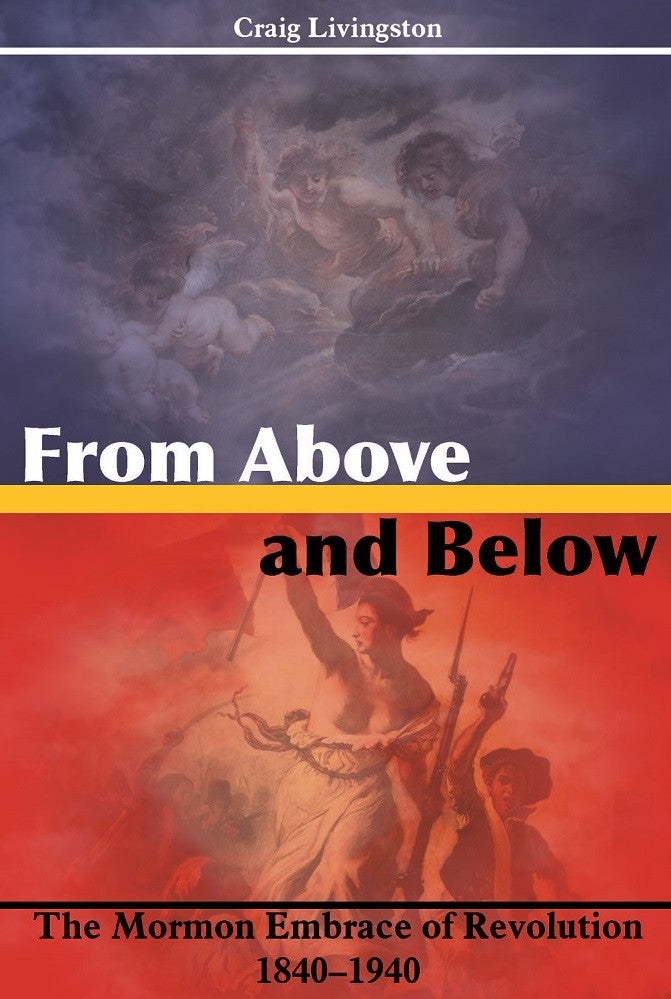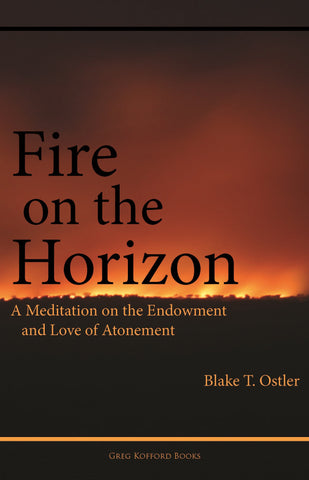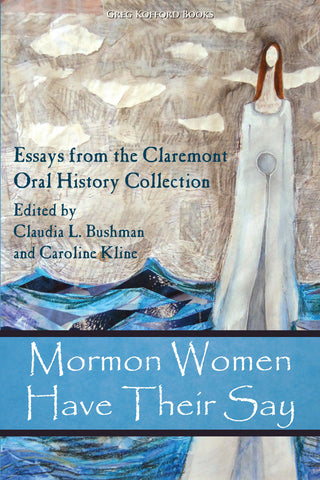From Above and Below: The Mormon Embrace of Revolution, 1840–1940
$34.95
2014 Best International Book Award, Mormon History Association
- “In this engaging study, ... Livingston demonstrates how Latter-day Saints interpreted revolutions through their unique theology and millennialism.” — Matthew J. Grow
- “With profound research in Mormon sources and in academic studies about various social revolutions and political upheavals, Livingston provides a nuanced examination of this little-known dimension of LDS thought .” — D. Michael Quinn



Available in ebook for Kindle, Nook, Kobo, Google Play, and Apple.
Also available through Amazon.
Book Description:
For the first century of their church’s existence, Mormon observers of international events studied and cheered global revolutions as a religious exercise. As believers in divine-human co-agency, many prominent Mormons saw global revolutions as providential precursors to the imminent establishment of the terrestrial kingdom of God. French Revolutionary symbolism, socialist critiques of industrialism, American Indian nationalism, and Wilsonian internationalism all became the raw materials of Mormon millennial theologies which were sometimes barely distinguishable from secular utopianism. Many Mormon thinkers accepted secular revolutionary arguments that the old world order needed to be destroyed, not merely reformed, to clear the way for the new.
In From Above and Below, author Craig Livingston tells the story of Mormon commentary on global revolutions from the European revolutions of 1848 to the collapse of Mormon faith in progress in the 1930s when revolutionary communist and fascist regimes exposed themselves as violent and repressive. As the Church bureaucratized and assimilated to mainstream American and capitalist values, Mormons became champions of the conservative view of political and social development for which they are known today. The first Mormon converts in Mexico and France, both political radicals, would scarcely recognize the arch-conservative twenty-first century Church.
Comprehensive Table of Contents:
.
Acknowledgments
Introduction
Mapping Parallel Revolutions
Revolutionary Reminders of the Mormon Past
Definitions
Sources
Synopsis
1. Secular and Religious Revolutionary Concepts
Martyrs of Revolution
The French Revolution
Revolution, Utopia, and the Millennium
The Revolutionary Idea Evolves
Religion and the Revolutionary Mind
Time Befriends the Believer
The Millennium
Georg Wilhelm Friedrich Hegel
Theo-Democracy and Totalitarian Democracy
Toward the Kingdom of God
2. Mormon Observers of the 1848 European Revolutions
The Ecumenical Banner
Course of the Revolutions, 1848–1851
The American Response
Mormon Sources and Mormon Observers
Excitement for Republican Government
Godly Republicanism and Jewish Emancipation
Revolution Promotes Missionary Work
The Script of Social Revolution
The Bitterness of Reaction
Two Futures
3. Mormon Revolutionary Symbolism
Borrowings
Masonry and Illuminism as Revolutionary Organizational
Geometry and Numbers
Symbols and Icons
Mormon Print, Proclamations, and Fiction
Red and Black, Festivals, Earthquakes, Volcanoes, and Wind
The Flag of the Kingdom of God
From Models of Revolution to the Mountains of Utah
4. A Mormon Critique of Industrialization, 1860–1920
Resistance to the Mainstream
Preamble to Full-blown Industrialism
Mormon Sympathy with Socialist Goals
Mormon Communalism in the Revolutionary Context
Property, Factories, and Observer Philosophies of Change
Taut Expectations
5. France and Russia in “The Throes Of Revolution,” 1870–71 and 1905
Introduction
The Franco-Prussian War (1870) and the Paris Commune (1871)
The 1905 Russian Revolution
Faith in Revolution Untarnished
6. Mormon Observers Respond to Colonialism
From Colonial Revolt, Hope
The New Imperialism
Ireland
Boer War
Spanish-American War and Philippine Insurrection
China
Japan
Persia and the Ottoman Empire (Turkey)
India
One-Worldism
From the Center to the Periphery
7. The Mexican Revolution and the Idea of an Indian Nation, 1910–17
Reprise of 1848
Mormon Point Men in Mexico
Mormon Economic Elitism in Mexico, 1886–1910
The Madero Revolution
Expulsion and Recalibration, 1912–13
A Messianic Revolution?
Carranza and the Constitutionalists
An Indian Nation Born in Revolution
8. Post-Revolutionary Mexico, 1920–30
Extension of Revolutionary Action
The New Mexico
Mormons in Mexico after 1917
The Church-State Controversy in Mexico and Civil Religion
Expanding the Revolution: The Ivins-Hunt Exchange, 1926
The Cristero Rebellion, 1927–29
Rey L. Pratt: The Revolution Must Continue
J. Reuben Clark, the Surprise Revolutionist
Satisfaction with the Revolution
9. The Bolshevik Revolution of 1917
Reordering the World
Mormon Observers Applaud the Czar’s Overthrow
The League of Nations as a Revolution in World Affairs
League Defeated—Observers Recalibrate and Take Refuge in Time
Latter-day Saint Praise of the Post-revolutionary Soviet Union
The Will to Believe
10. The Golden Age of Revolution in South America, 1925–31
Missionary Work or Socio-religious Radicalism?
Consecration of South American Revolution
Depression and the South American Predicament, 1930–31
Mormon Observers Revel in Revolutionary Jubilation
An Exercise in Hope
11. Fade-Out and Conclusion
A Shifting Response
Reprise: The Great Depression and the Sensation of Revolution
Fade-out: History, Time, and Revolution Lose Canonical Authority
Conclusion
Coda
Biographical Register of Mormon Observers
Bibliography
Abbreviations
Historical Newspapers and Periodicals
Published and Unpublished Sources
Index
Praise for From Above and Below:
“In this engaging study, Craig Livingston examines Mormon responses to political revolutions across the globe from the 1840s to the 1930s. Latter-day Saints saw utopian possibilities in revolutions from the European tumults of 1848 to the Mexican Revolution. Highlighting the often radical anti-capitalist and anti-imperialist rhetoric of Mormon leaders, Livingston demonstrates how Latter-day Saints interpreted revolutions through their unique theology and millennialism.” — Matthew J. Grow, author of "Liberty to the Downtrodden”: Thomas L. Kane, Romantic Reformer
“Craig Livingston’s landmark book demonstrates how 21st-century Mormonism's arch-conservatism was preceded by its pro-revolutionary worldview that was dominant from the 1830s to the 1930s. Shown by current opinion-polling to be the most politically conservative religious group in the United States, contemporary Mormons are unaware that leaders of the LDS Church once praised radical liberalism and violent revolutionaries. By this pre-1936 Mormon view, ‘The people would reduce privilege and exploitation in the crucible of revolution, then reforge society in a spiritual union of peace’ before the Coming of Christ and His Millennium. With profound research in Mormon sources and in academic studies about various social revolutions and political upheavals, Livingston provides a nuanced examination of this little-known dimension of LDS thought which tenuously balanced pro-revolutionary enthusiasms with anti-mob sentiments.” — D. Michael Quinn, author of Elder Statesman: A Biography of J. Reuben Clark
About the Author:
Craig Livingston is Professor of History at Lone Star College-Montgomery in The Woodlands, Texas. Previous to academia, he served as an infantry officer in the US Army.
More Information:
Pages: 452
ISBN: 978-1-58958-621-5 (paperback)
Published June 2013






Share this item: